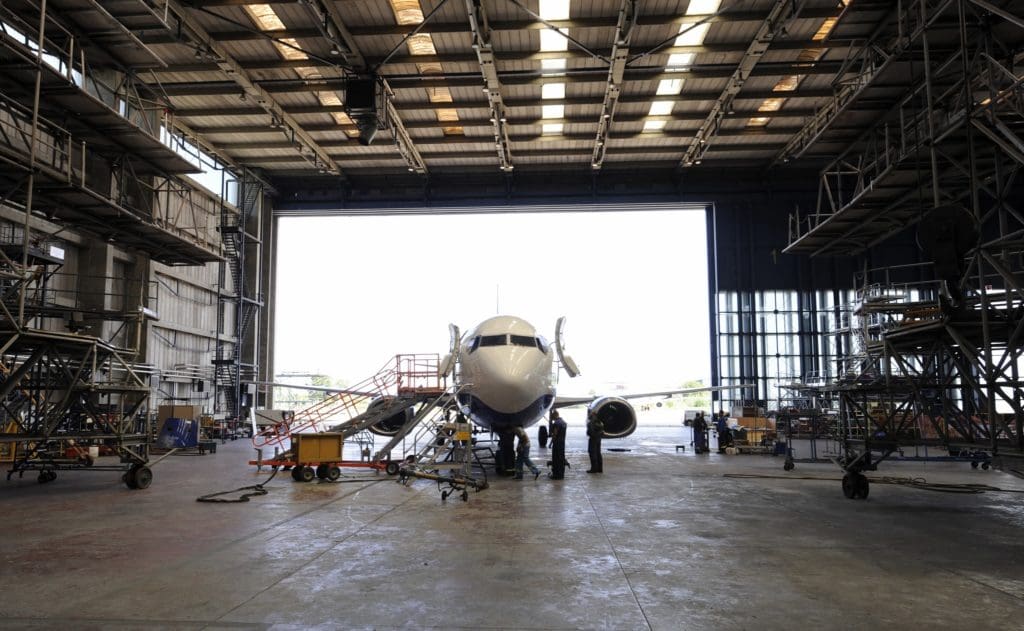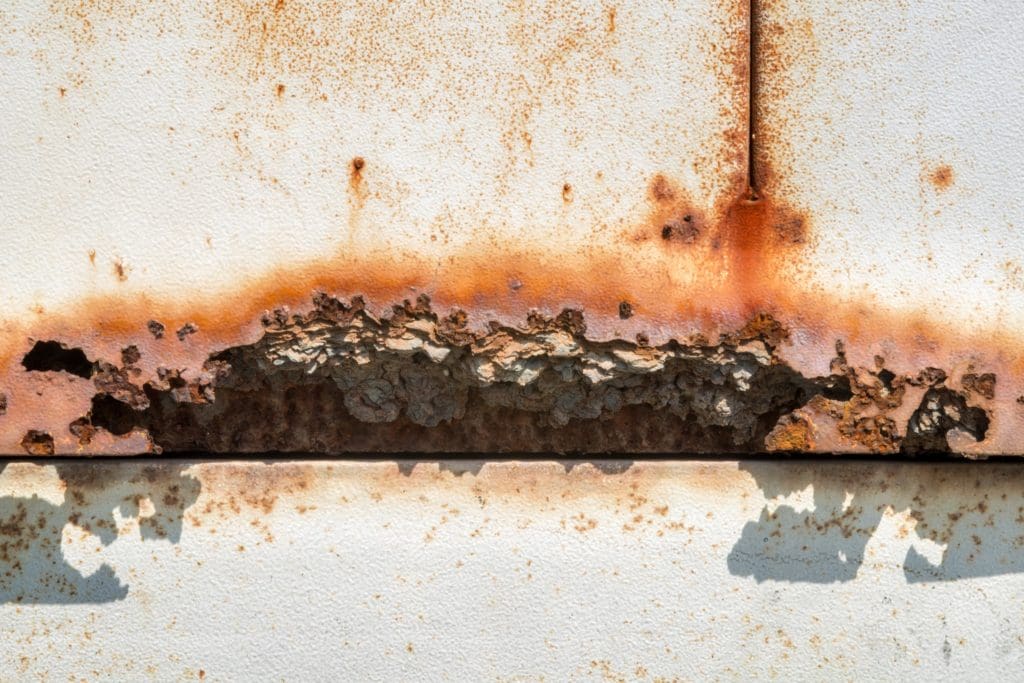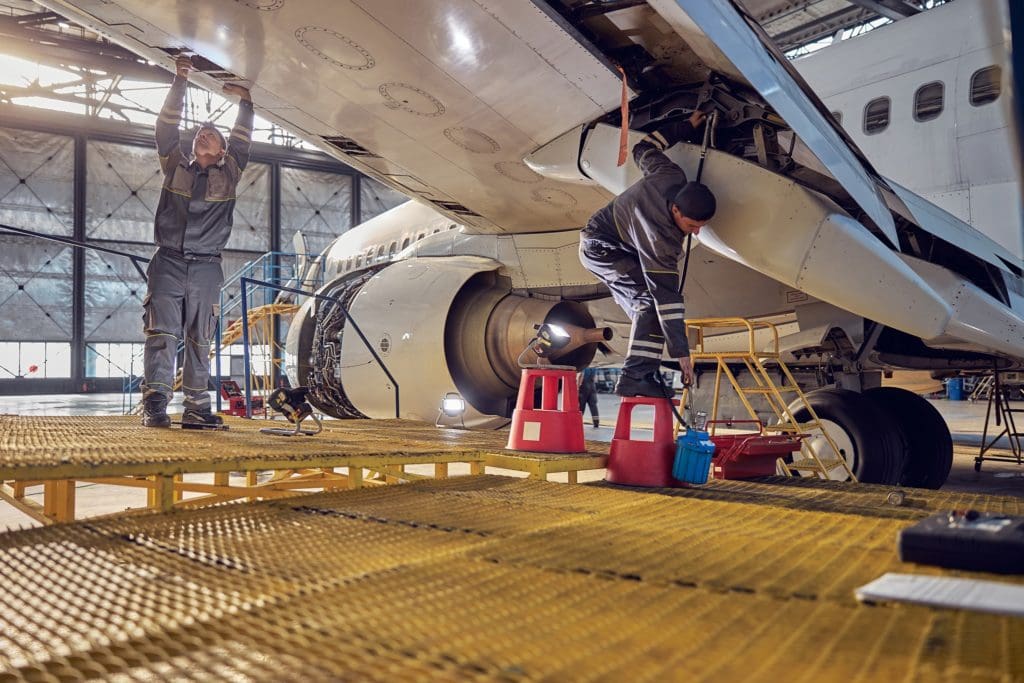While air travel saw a dramatic decline in 2020, the demand is picking up again and is expected to increase beyond previous highs. With economical challenges and increased demand for aircraft availability, the need for efficient aerospace repair options is higher than ever before. Unfortunately, traditional aircraft repair processes can be slow and costly, leading to logistical nightmares.
Luckily, new technologies have emerged to help mediate the logistical nightmare of aerospace repair. VRC Metal Systems is a leader in providing cold spray technology support and repairs. Using cold spray for aerospace repair saves valuable time and provides lasting benefits. Check out our aerospace industry overview or read ahead to learn how cold spray technologies from VRC provide huge benefits for aircraft repair.
Traditional aircraft repair and maintenance is a costly process.
Repairs are costly in the aerospace industry.
Repairs must follow vetted procedures with post-repair inspection, and is often very expensive, but ensuring the safety and reliability of your aircraft is imperative. Aircraft must also undergo thorough maintenance check-ups to ensure safe travel for all.
Most aerospace maintenance occurs at MRO (maintenance, repair, and overhaul) service facilities.

The variety of services offered often depends on each facility’s location and size. It is not uncommon to see a repair facility that only provides a few concentrated services. Parts repair and maintenance repair and overhaul occur within a web of many repair stations. This complicated network of maintenance programs has the potential to slow down your MRO process.
Budgets are tight in the aerospace repair and component repair business.
Depending on the scale of work, many MRO service facilities can’t complete every necessary repair. As a result, repair work is divided between the facility and subcontractors, which often elongates the entire overhaul process.
Maintenance personnel often experience extreme fatigue.
When team members are tired on the job, you are putting everyone’s safety at risk. There are certain requirements of aerospace repair that differ from the typical working schedule. Early mornings and late nights are demanded of the aviation industry workforce to keep the world moving. Fatigue training is often a mandatory part of working in aircraft repair.
Traditional methods often require part removal for repair.
Removing individual parts for repair can slow down the repair process and waste your team’s precious time. With cold spray technology, many repair jobs can be done while leaving the part in place. Component maintenance may no longer require disassembly.
Corrosion is an aircraft’s worst enemy.

There are various types of corrosion that aircraft experience.
When metal parts are exposed to oxygen over a long period, the metal begins to oxidize, and corrosion occurs. This is exacerbated whenever moisture is present, and chlorides (which are present in ocean air) further accelerate this process. Corrosion requires early detection, heavy maintenance, and special component repair technologies. Aircraft experience different types of corrosion depending on a few factors.
Uniform surface attack corrosion is one of the least harmful variations that aircraft experience.
There are many possible contributors to uniform surface attack corrosion. A bad paint job, pollutants, and even high humidity, can lead to breakdown of your metal surfaces. The metal meets with these secondary materials and undergoes a chemical reaction. A familiar example of uniform surface corrosion may be rusty plow blades or manhole covers.
Stress corrosion presents a more serious problem. This is a type of crack formation and growth where corrosion and mechanical stresses combine synergistically to grow cracks. This happens on a scale invisible to the human eye, but if left unchecked, it can lead to disaster. A tiny scratch can be enough to set this in motion. This is one of the drivers of inspection requirements.
Exposure to saltwater and humidity can quickly lead to surface corrosion.
Luckily, strong surface coatings may be applied to stop the corrosion from taking over. Cold spray can be used to create a barrier against corrosion. Barriers can be of highly noble material, such as pure aluminum on top of high-strength aluminum alloys or nickel-based superalloys on top of stainless steel.

Crevice corrosion isn’t easy to spot and can be difficult to treat.
Crevice corrosion occurs when an electrolyte is trapped where two surfaces meet. It is a dangerous form of corrosion and can quickly lead to pitting in your aircraft’s surfaces. It is especially difficult to treat with traditional methods and often requires full overhaul and repair. With cold spray, crevice corrosion can be more easily repaired.
Intergranular corrosion is a localized variation of surface corrosion.
Typically, this type of surface damage occurs when alloys are improperly treated and exposed to corrosive environments. This variation of corrosion attacks the borders between the tiny grains that are present in metals. It feeds on a lack of uniformity in the materials and begins to oxidize where these different grains meet. It appears as surface patches of oxidation. Luckily, once identified, cold spray technicians can repair these surface imperfections.
Filiform corrosion is easy to recognize.
This corrosion variation occurs when aluminum surfaces are not properly prepared for polyurethane paint. Also known as filamentary corrosion, filiform corrosion shows up as tiny, worm-like lines (filaments) that will eventually cause bubbling and flaking. When this type of corrosion occurs, you can utilize cold spray to repair the damage.
Dissimilar metal corrosion is one of the most elusive corrosion problems.
This is also known as galvanic corrosion and can go on for a long time without being detected. In many cases, you will only discover this type of corrosion when disassembling components of your aircraft. This can occur even when the parts were designed with proper material pairing if steel brushes or steel wool were used, for example, because tiny steel particles can permeate the surface and induce corrosion.
You need a fast, expert-level repair service to solve corrosion issues.

Cold spray is an easy and flexible solution for many of your current surface repair slow-downs.
VRC Metal Systems offers cold spray solutions that might fit your repair needs.
What is cold spray?
Cold Spray is a coating deposition process in which metal particles are actuated at supersonic speeds onto a surface. It is an additive manufacturing process that creates a durable layer without reaching the material’s melting point.
Cold spray will save you time.
Many of the current airplane maintenance and repair issues that you experience can be fixed with cold spray technology. Instead of removing and replacing parts, cold spray can be applied in situ to resolve certain corrosion issues.
You can make repairs quickly with cold spray.
Cold spray disrupts the traditional repair methodology. You no longer need to bring your aircraft into an MRO facility for certain repairs. With VRC, cold spray comes to you.
VRC offers a mobile repair solution for your corrosion problems.
To help you move quickly for repairs, VRC offers mobile cold spray support. Also available is cold spray equipment for lease through VRC. This program allows you to familiarize yourself with the ease and flexibility of cold spray technology.
You can get on-site training for VRC cold spray solutions.
With on-site support and training, your technicians will be able to get the job done faster. VRC Metal Systems is committed to your success with cold spray. You will be provided with extensive training and have any answers to questions that may arise.
Cold spray repair provides awesome benefits.
VRC Metal Systems is a leader in providing cold spray technology support and repairs. Using cold spray for aerospace repair saves valuable time and provides lasting benefits. Reach out to VRC today to find out how our cold spray solutions can help you fly farther.


